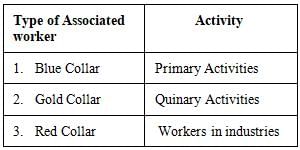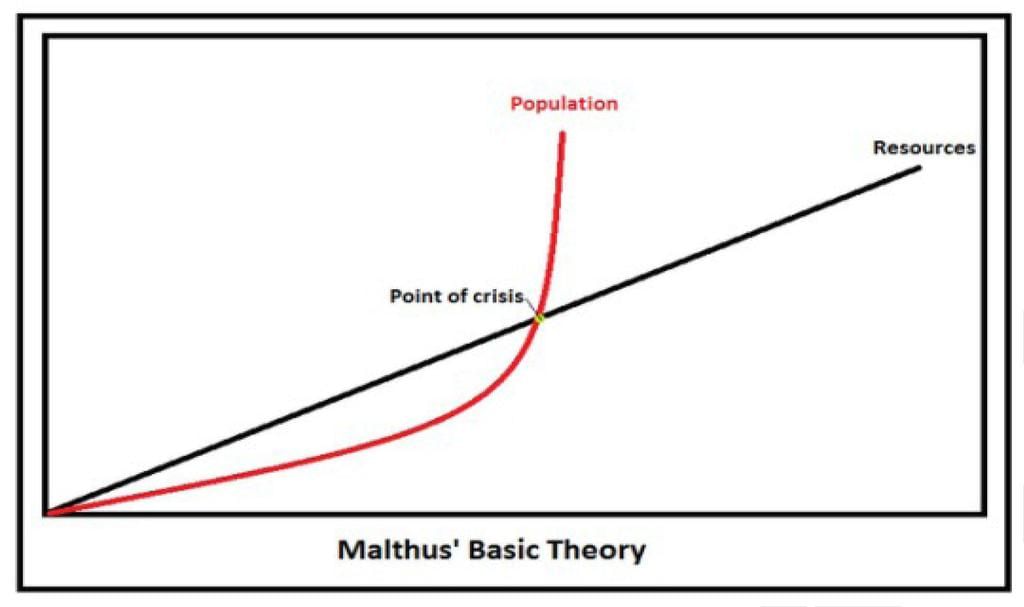Test: Geography - 3 - UPSC MCQ
25 Questions MCQ Test - Test: Geography - 3
Which of the following characterize Plantation agriculture?
Large capital investments
Multi crop specialization
Scientific methods of cultivation
Highly-paid skilled workforce
Select the correct answer using the code given below.
Large capital investments
Multi crop specialization
Scientific methods of cultivation
Highly-paid skilled workforce
Consider the following statements regarding footloose industries:
Footloose industries are those industries which enjoy relatively free choice of location.
The cotton industry is an example of a footloose industry.
Which of the statement given above is/are correct.
Footloose industries are those industries which enjoy relatively free choice of location.
The cotton industry is an example of a footloose industry.
| 1 Crore+ students have signed up on EduRev. Have you? Download the App |
Which of the following statements best describes the Malthusian view of population growth and development?
Consider the following statements regarding the proven Crude Oil Reserves among the OPEC countries:
-
Saudi Arabia shares the highest share of proven crude oil reserves.
-
Ecuador shares the lowest proven crude oil reserves.
Which of the statements given above is are correct?
Consider the following statements regarding the Sugarcane crop in India:
-
India is the largest producer of Sugarcane in the world.
-
Yield of Sugarcane crop is higher in Northern India as compared to Southern India.
Which of the statements given above is/are correct?
With reference to various approaches to Human Development, consider the following statements:
The welfare approach assumes the level of freedom enjoyed by a person to be linked to his income.
The basic needs approach developed by Prof. Amartya Sen identifies four basic needs of an individual.
The capability approach lays emphasis on development of health and education.
Which of the statements given above is/are correct?
Consider the following statements regarding lagoons:
In India, they are confined along the western coast.
In general, the presence of saltwater in these bodies, make them unfit for agricultural purposes.
Which of the statements given above is/are correct?
Which of the following is/are the problems faced by the Jute industry in India?
Inadequate supply of raw materials.
Competition from substitutes
Obsolete machinery
Select the correct answer using the code given below.
Which of the following most appropriately defines quinary activities?
Consider the following pairs:

Which of the pairs given above is/are correctly matched?
Rural settlements which are extended on both sides of a river and connected by a bridge are known as:
Karaganda basin, Damodar valley and Shanxi valley are famous for which of the following mineral deposits?
Which of the following are the consequences of migration?
Remittances for the region of source of migration
Pressure on the physical infrastructure in the urban areas
Evolution of composite culture in the destination region
Select the correct answer using the code given below.
As per the classification of industries by output, which of the following are basic industries?
Iron and steel industry
Copper refining
Mobile manufacturing
A cottage industry of soapmaking
Select the correct answer using the code given below.
Arrange the following events in the chronological order:
Establishment of the first modern cotton mill in India.
Introduction of railways in India.
The establishment of the first jute mill at Rishra, West Bengal.
Select the correct answer using the code given below.
Panama Canal is one of the vital man-made navigation canals in the world. It has shortened the distance between
East Coast and West Coast of USA
Western Europe and the West coast of the USA
The north-eastern USA and South-East Asia
Select the correct answer using the code given below.
Which of the following books/reports are related to sustainable development?
Agenda-21 report of Rio Conference
Our Common Future
Limits to Growth
Select the correct answer using the code given below.
Which of the following most appropriately defines the concept of 'Human Development'?
"The tribes are nomadic herders and food gatherers roaming around in Kalahari Desert with weapons like spear, bows and poisoned arrows to safeguard themselves and hunt their prey. They do not domesticate animals nor do they engage in agricultural activities."
The above passage best describes which of the following tribes?
Which of the following practices lead to sustainable development?
Shelterbelt plantation
Warabandi system
Intensive agriculture
Select the correct answer using the code given below.
Which of the following settlement types reflects discrimination prevalent in rural areas with people of lower strata?
In the context of human development, consider the following statements:
Increase in the per capita Gross Domestic Product (GDP) necessarily results in poverty reduction.
According to 2011 Census, states with higher per capita income have recorded higher child sex ratio.
Which of the statements given above is/are correct?
Consider the following events:
Launch of Radio broadcasting in India.
Launch of television services in India.
Nationalization of Radio broadcasting.
Operationalization of INSAT Satellite System.
Select the correct chronological order using the code given below.


















